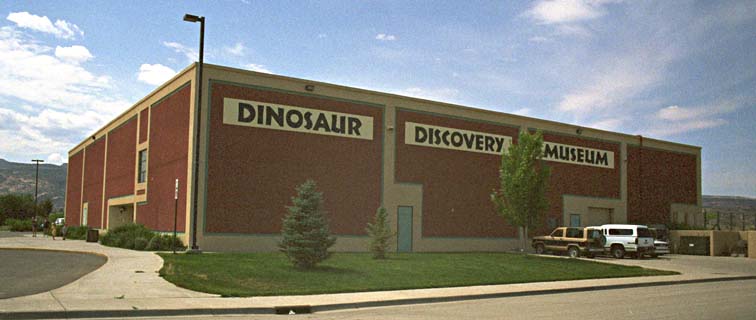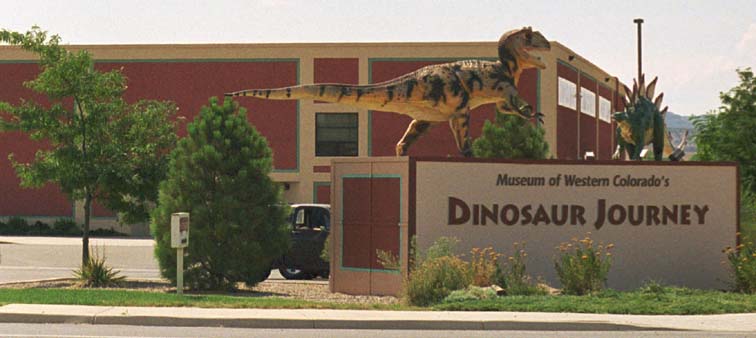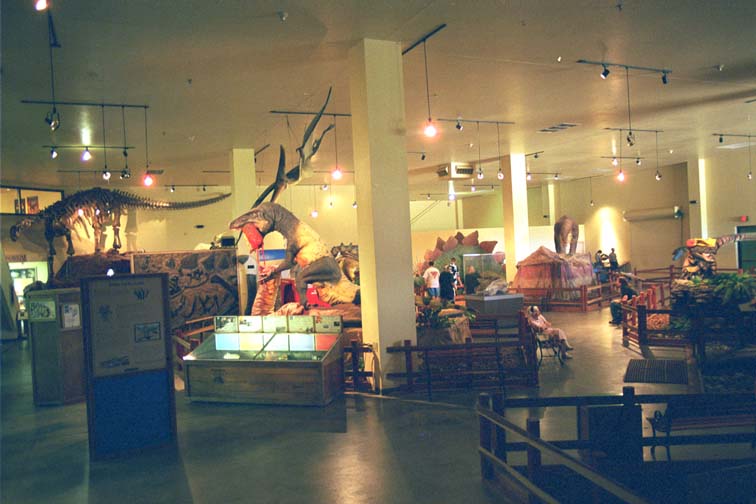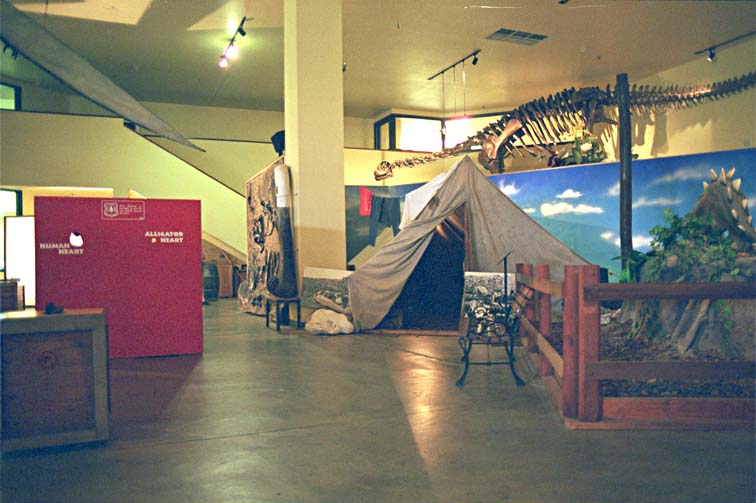We saw this view of the Dinomation Dinosaur Discovery Museum as we exited I-70.

After Douglas Pass, we followed the road into Fruita (pronounced Froo-ta), Colorado, looking for a motel. We didn't choose the ones right on US 6, so we continued into Grand Junction. We wandered around there for a while and then pulled over while Dick consulted the motel list from the Internet. He discovered the motels were clustered north of town, by the Interstate and by the airport.
Thanks to the Colorado State highway map, which had a street map of Grand Junction, we found our way to the Country Inn. When we went out to dinner we found it had rained while we were unpacking! A fellow guest at the hotel told us that Applebees was right across the road, so we went there for dinner.
Friday morning we ate breakfast at Denny's and then headed for the Dinosaur Valley Museum only to find an empty storefront at its address. We found out that it had merged with Dinomation Dinosaur Discovery Museum in Fruita. Since that was our next stop, we headed to Fruita.
We saw this view of the Dinomation Dinosaur Discovery Museum as we exited I-70.

This is the front of the Dinomation Dinosaur Discovery Museum.

The inside of the museum is a large room with a collection of animated dinosaurs.
In the foreground of this photograph is an Allosaurus tearing apart its prey. To the right, with the yellow and red crest, is a carnivore that spits every minute or so, presumably to startle its prey. There is a sauropod skelton to the upper left. Just under its head is a working paleontology lab.
The Stegosaurus in the back of this photograph is near the entrance to the museum and is one of the first dinosaurs you see as you come into the room.

This tent is part of a recreation of Elmer Riggs's camp on Dinosaur Hill, just over a mile from the Museum. Sponsored by the Field Museum Of Natural History in Chicago, he worked there and at nearby Riggs Hill in 1900 and 1901 unearthing Diplodocus and Brachiosaurus skeletons. We saw the holotype Brachiosaurus he found when we visited the Field Museum in 1997.
The red cube to the left is a comparison display of the size of the hearts of various animals. Holes in the near size show the size of a human heart and an alligator heart. On the far side, almost as big as the cube, is a hole the size of a Brachiosaurus heart.

Copyright (C) 2000 by Dick Hodgman.
If you would like a large format copy of an image, contact Dick through http://www.hodgman.org/contact/
Last modified on 2003 January 13